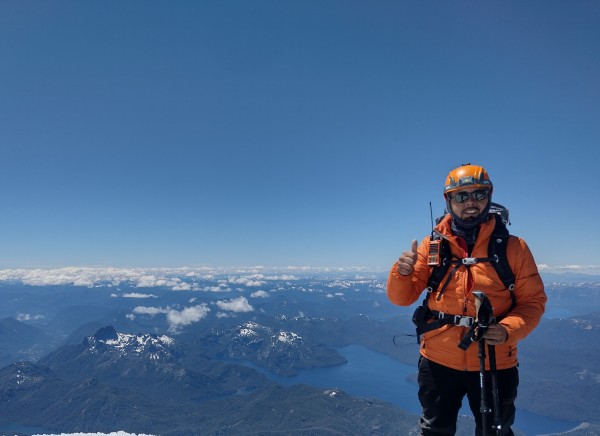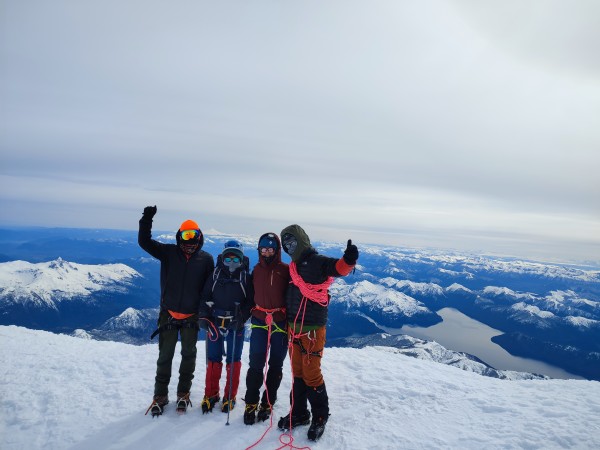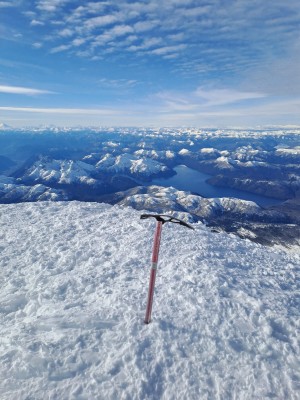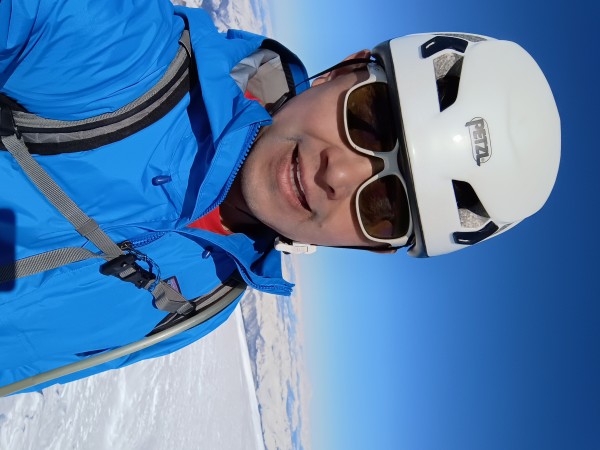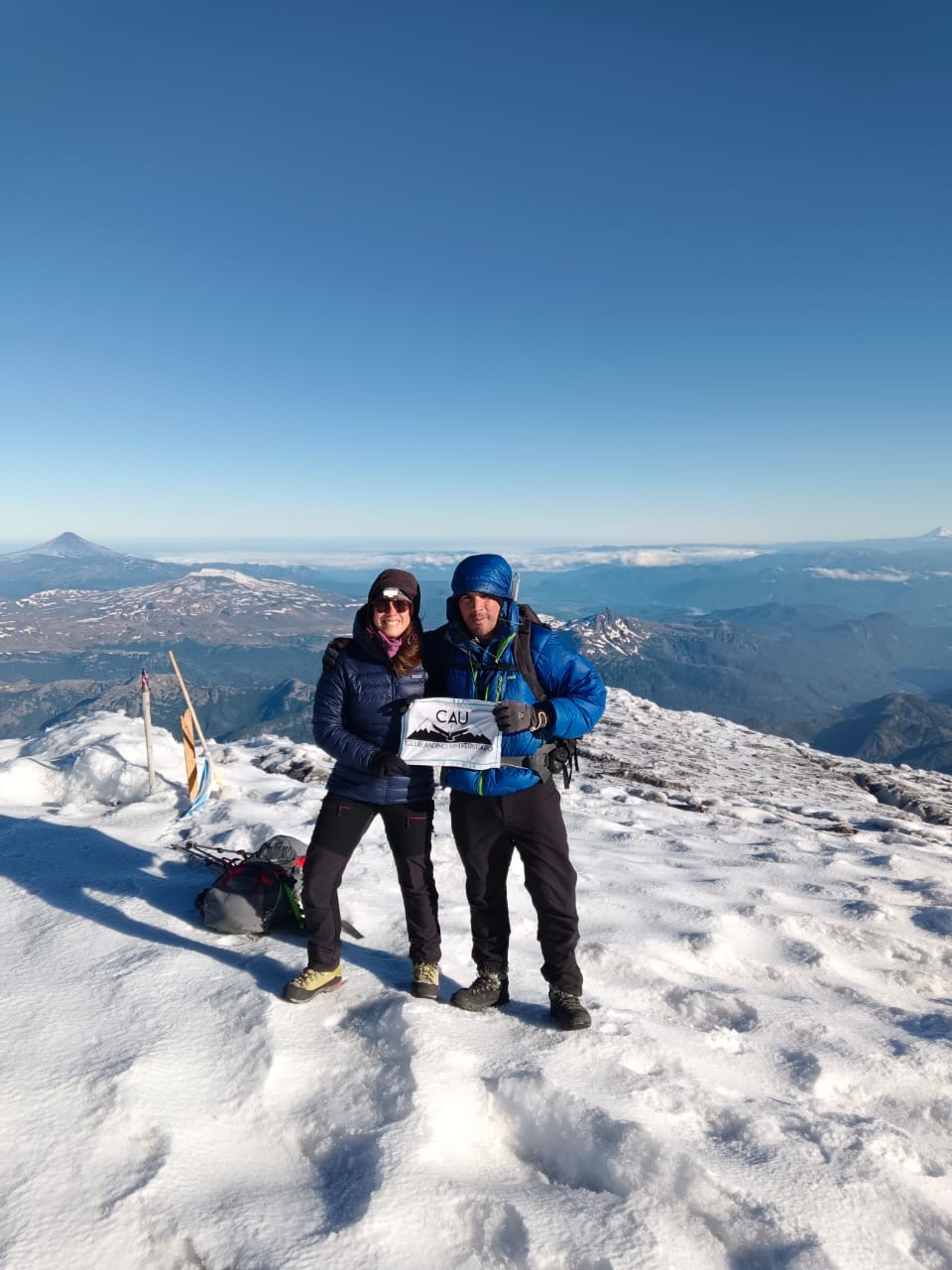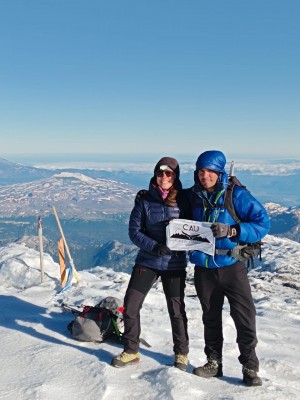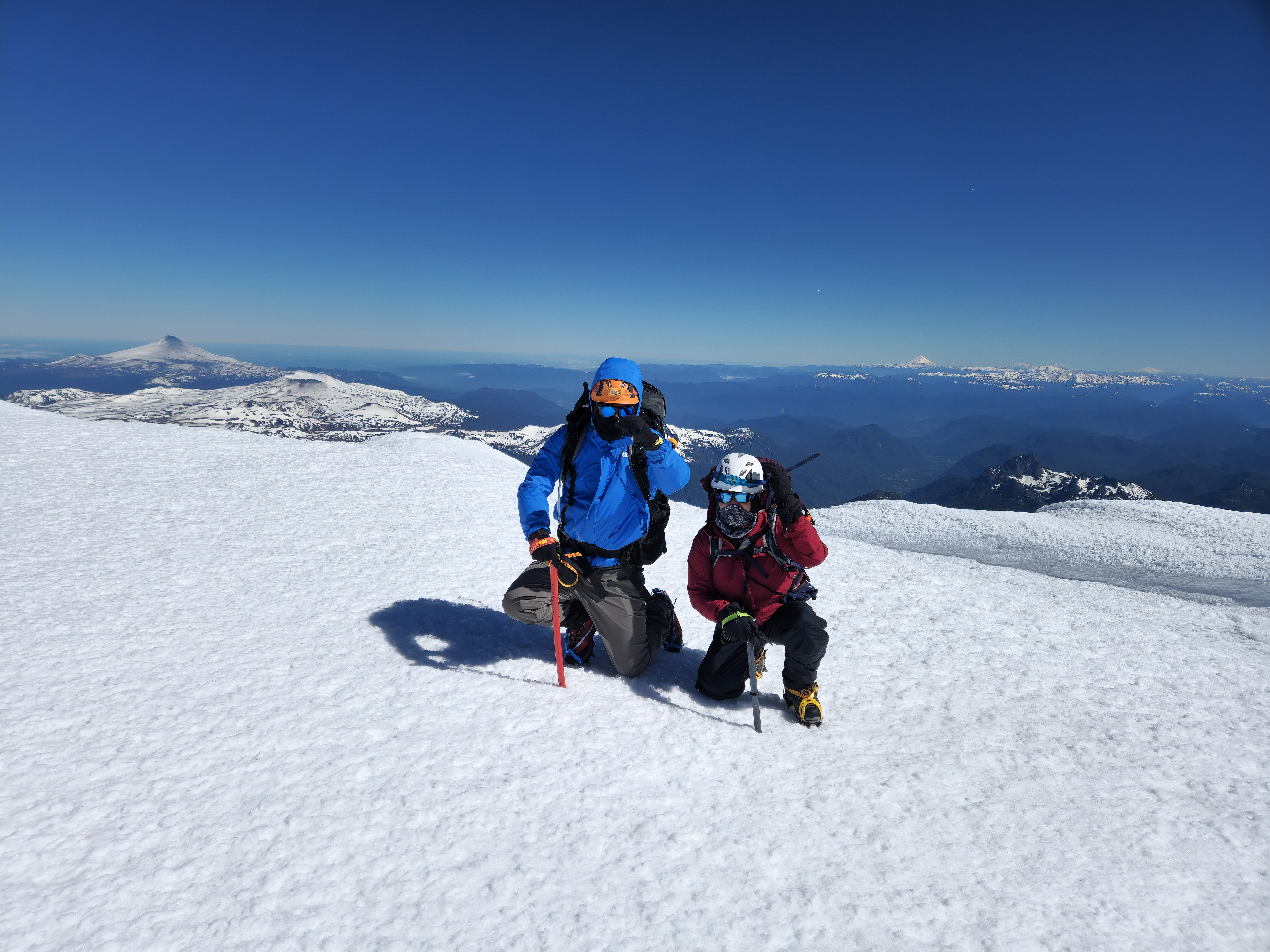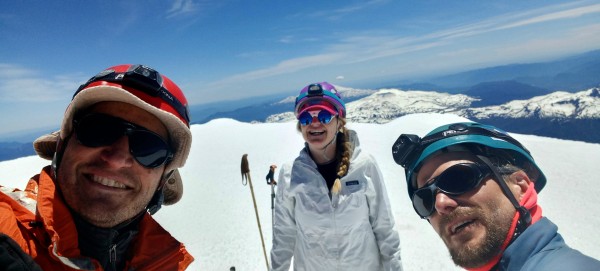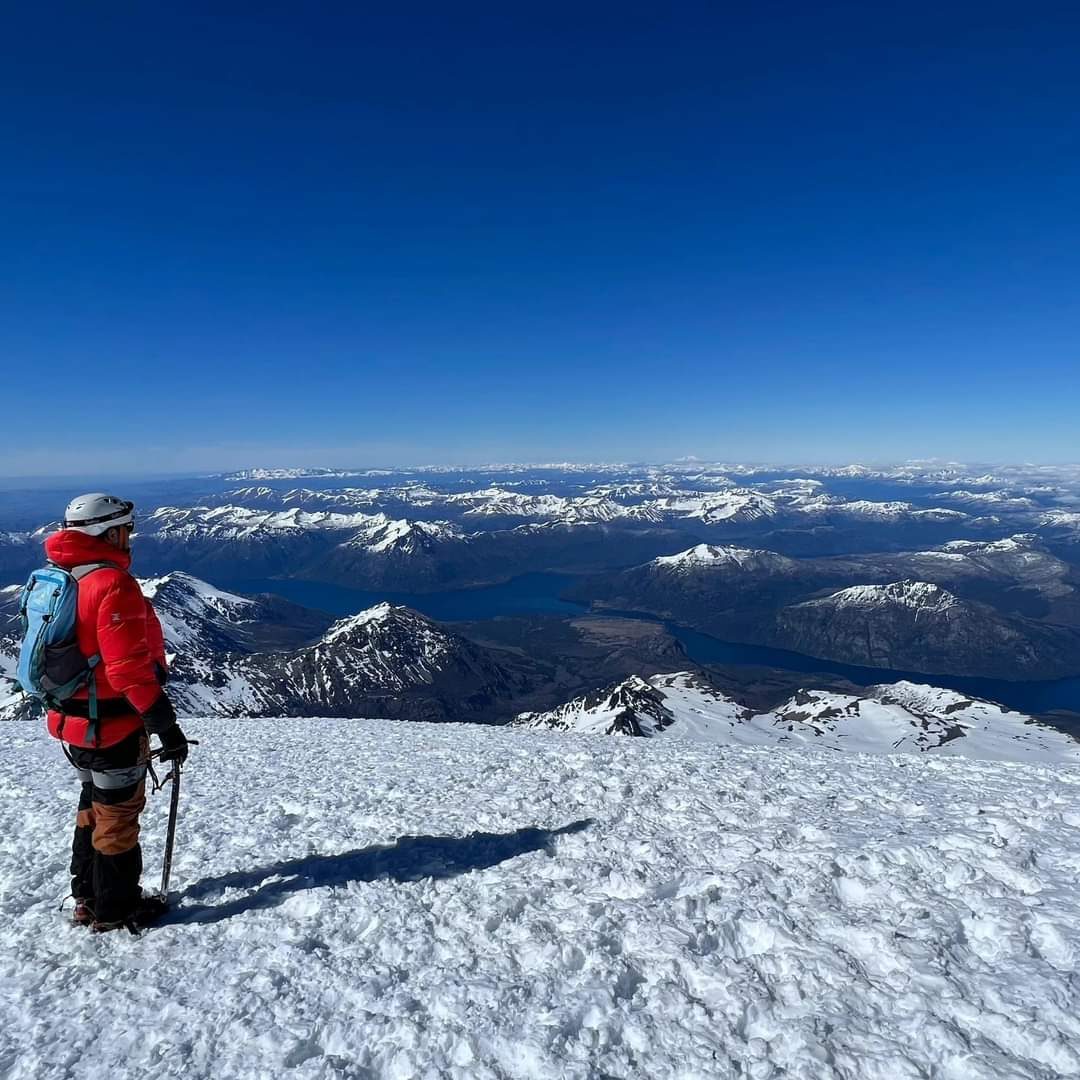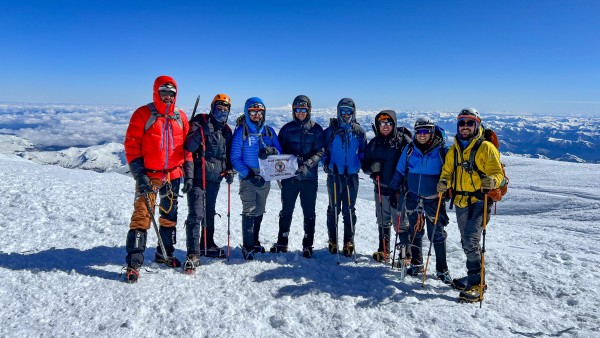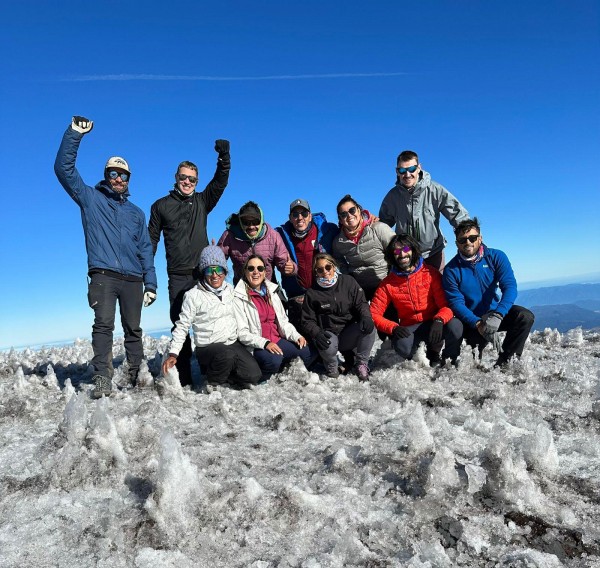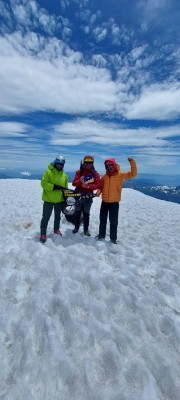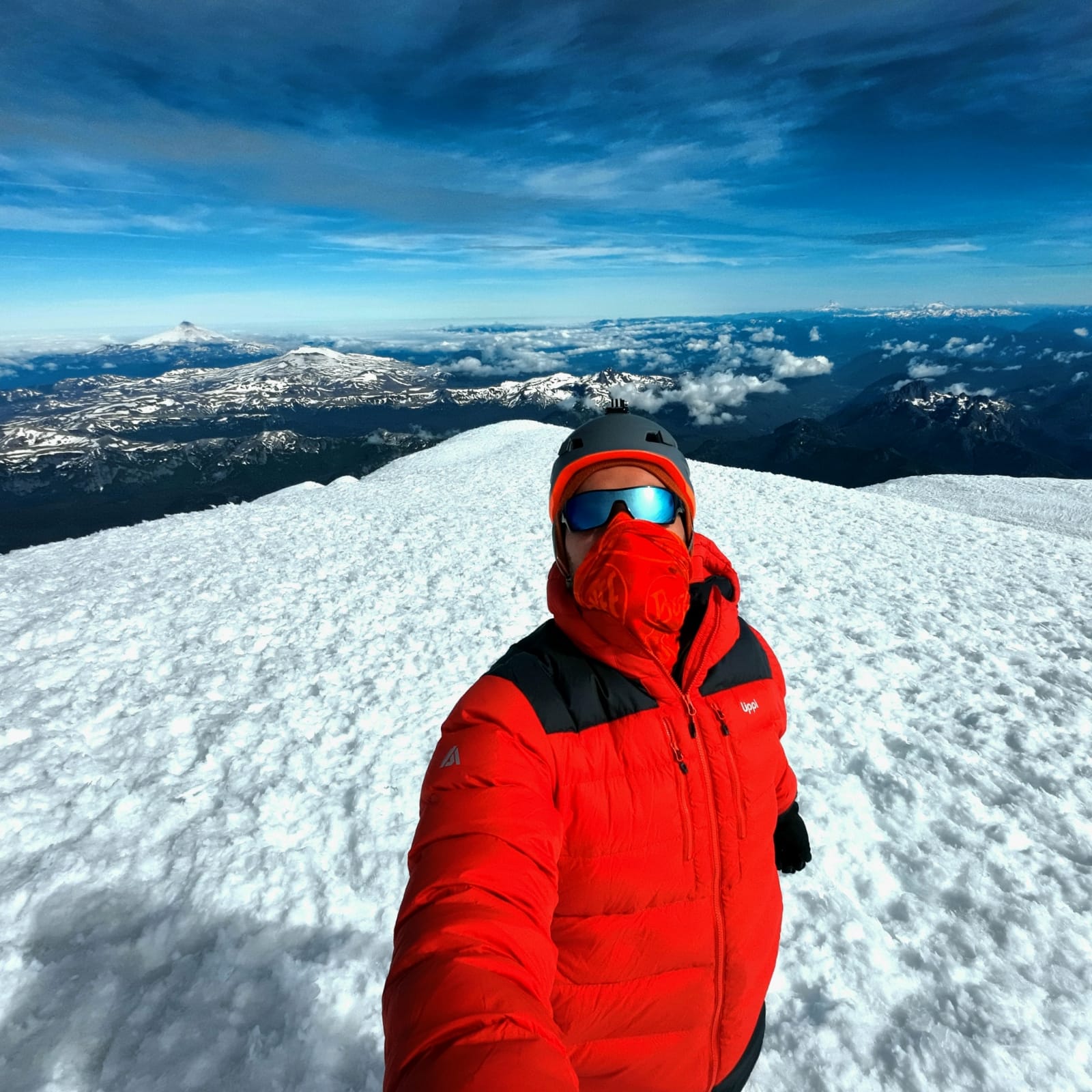Volcán Lanín (3.747m)
Región de la Araucanía, Parque Nacional Lanín
Parque Nacional Villarrica / Ciudad cercana: Pucón
San Martín de los Andes
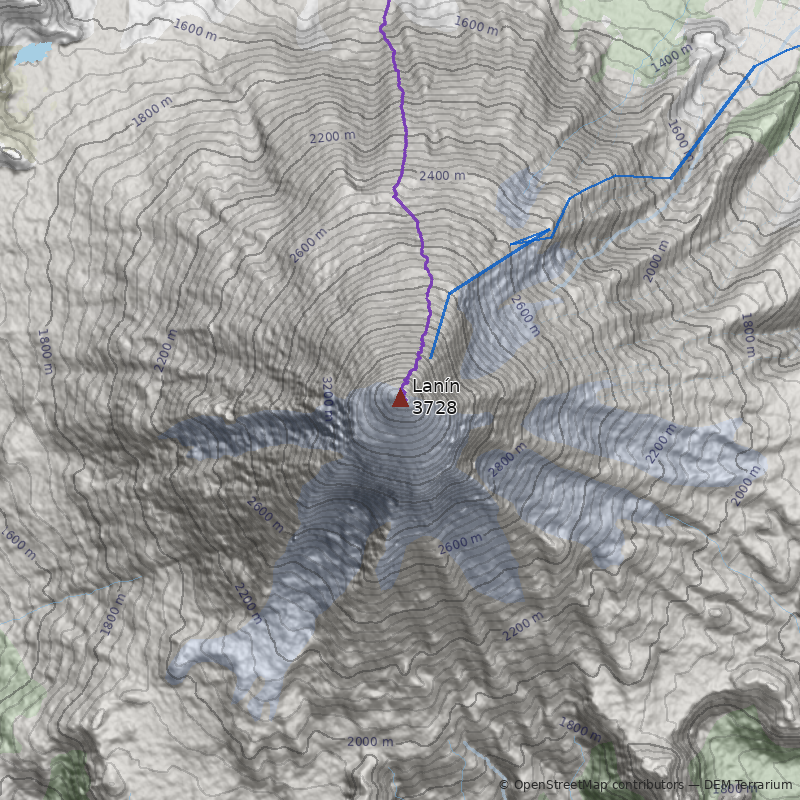 AHB Maps
AHB Maps
Fecha publicación: 18-03-2002
Última actualización: 03-04-2025
Presentación
El Lanín, que quiere decir "roca muerta" en mapudungun, es a la cordillera del sur lo que el Aconcagua es a la cordillera central: ambos sobrepasan a sus vecinos por más de mil metros, y se imponen sobre el horizonte como ninguno. Algunos poetas argentinos de Junín dicen haber vislumbrado ambos océanos desde su cráter extinto, cuando los cielos eran más nítidos. Este hecho fantástico aún no ha sido corroborado; sin embargo el Lanín ciertamente domina un radio que sobrepasa los 150 km.
Leyendas mapuches cuentan que antes, en tiempos de los abuelos de los abuelos y más allá en el tiempo, existían dos Lanines. Uno feroz, gigante, que luego de una gran erupción que castigó a los moradores de la región se tragó a si mismo. El otro sobrevivió, pero era más pequeño y menos inquieto que el primero. El segundo es el que conocemos. La tradición mapuche creía que en la cima del volcán moraban espíritus perversos que daban muerte a los que se atrevían a subirlo. Por otro lado, Lanín, además de "roca muerta", es el verbo de la primera persona del plural que quiere decir "nos hundimos" (en las cenizas de los volcanes o en la nieve). No se sabe de la última erupción del volcán, pero con toda seguridad el volcán asustó a muchas generaciones de mapuches, en otros tiempos. Quizás en los tiempos de la mitología.
Su morfología corresponde a un estratovolcán que, en conjunto con los volcanes Quetrupillán y Villarrica, forma una cadena volcánica transversal de orientación Noroeste-Sureste. Su actividad eruptiva se inicia en el Pleistoceno Medio hace cerca de 200 mil años. El volcán ancestral fue profundamente erosionado por el hielo y sobre sus ruinas se construyó el edificio actual dando forma a la mayor cumbre de la región. El estilo eruptivo dominante es efusivo, con profusa emisión de lavas basálticas y en menor proporción dacíticas. Durante el Holoceno, ocurrieron contemporáneamente erupciones en el cráter central y en los centros eruptivos de flanco, algunas de ellas probablemente hace solo algunos siglos. No existe vestigio de grandes erupciones explosivas como las documentadas en los volcanes vecinos. Aunque el volcán Lanín no presenta actividad eruptiva reciente ni documentada históricamente, la juventud de sus emisiones holocenas sugiere considerarlo un volcán activo y potencialmente peligroso. En efecto, la presencia de un glaciar en su cumbre y la empinada pendiente de sus flancos sugieren que el mayor peligro asociado es la ocurrencia de lahares.
La ruta normal al volcán se sigue desde el lado argentino (el volcán es limítrofe), y parte desde las inmediaciones del ventoso lago cordillerano Tromen. El Lanín está ubicado al interior del Parque Nacional Lanín (Argentina), que limita al oeste con el Parque Nacional Villarica (Chile). A sus pies se encuentra el paso Mamuil Malal, y sobre sus pendientes se sigue a la vista el extenso bosque de araucarias que se agranda hacia Chile.
La ascensión está controlada por los guardaparques argentinos. Se deberá notificar la subida, mostrar equipos y señalar plan de ascensión si se sigue cualquiera de las rutas que suben por la cara norte (bastante seco en verano). El equipo exigido por los guardaparques incluye, aparte de lo tradicional para este tipo de ascensiones: piolet, crampones y equipo de comunicaciones VHF.
Por el lado sur el Lanín ostenta una abrupta pared glaciar que domina los lagos Huechulafquen y Paimún. Es la cumbre más alta considerando toda la cordillera desde el volcán Domuyo (4809m; Argentina; 350km más al norte, latitud de Chillán) hasta el punto donde el San Valentín pasa a ser soberano.
El primer ascenso del Lanín fue conseguido en solitario en 1897 por el teólogo y naturalista alemán Rudolph Hauthal quien ese mismo año había conseguido los primeros ascensos del Peteroa, Planchón y Descabezado Grande. El segundo ascenso del Lanín fue realizado recién en 1921 por los miembros del DAV Valparaíso E. Kremer y F. Fonck, quienes, sin saber del ascenso de Hauthal, pensaron que habían sido los primeros. En 1939 Nelly Frey de Neumeyer se convirtió en la primera mujer en alcanzar esta cumbre.
Link de interés
Monitoreo de Sernageomin para el volcán Lanín
Referencias
- Kremer, E. Die Erstbesteigung des Lanín (3740m). Revista Andina, 1931, Heft 2, Club Alemán Andino (pág 35-40). (Traducción de este artículo).
- Lisnovsky, Marcelo. El protagonismo de las mujeres en la historia del montañismo argentino. Centro Cultural Argentino de Montaña.
Características de la montaña
Primera ascensión
Año: 1897- Rodolfo Hauthal (DE)

